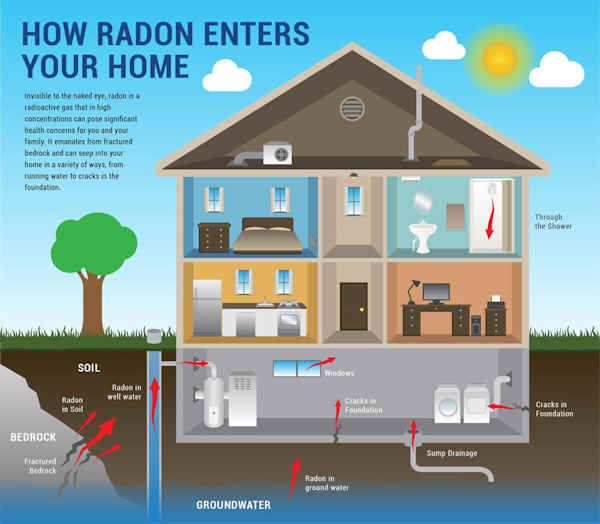Radon Overview

Radon comes from the natural breakdown of uranium in soil, rock, and water. It gets into the air you breathe and typically moves from the ground to the air above and into your home through cracks and other holes in the house’s foundation. It can also enter your home through well water and is possible for your home to trap it inside.
Possible symptoms of radon poisoning include shortness of breath (difficulty breathing), a new or worsening cough, pain or tightness in the chest, hoarseness, or trouble swallowing. If you smoke and you know you’ve been exposed to high levels of radon, it’s very important to quit smoking.
There is no single method that fits all radon removal system needs. Common techniques include: Sub-slab depressurization, where suction pipes are inserted through the floor or concrete slab into the concrete slab below the home. A radon vent fan then draws out the radon gas and releases it into the outside air.
In 2005, U.S. Surgeon General Richard H. Carmona warned the American public about the risks of breathing indoor radon by issuing a national health advisory. The advisory was meant to urge Americans to prevent this silent radioactive gas from seeping into their homes and building up to dangerous levels.

